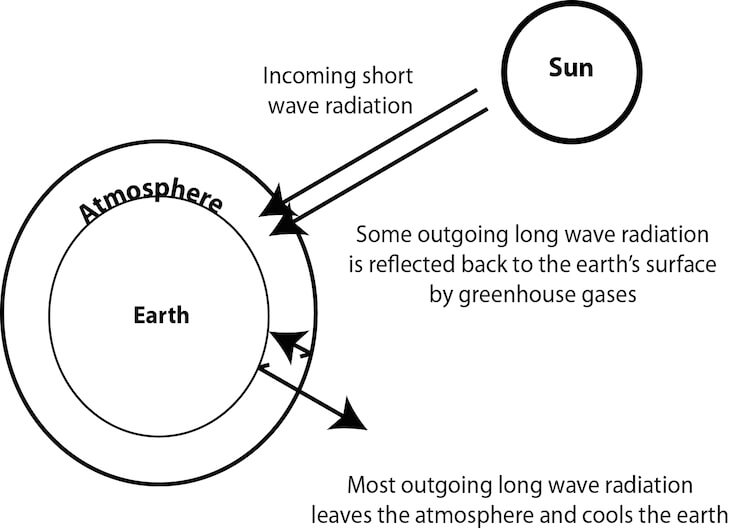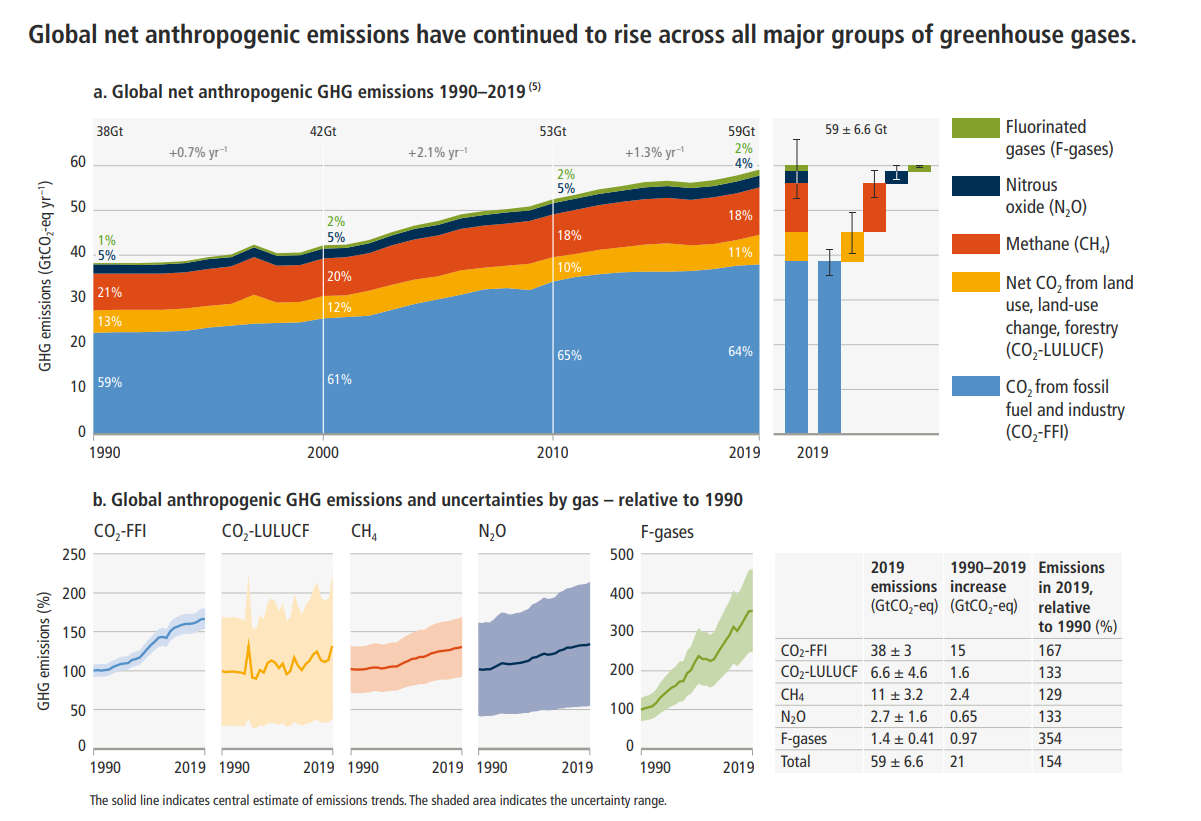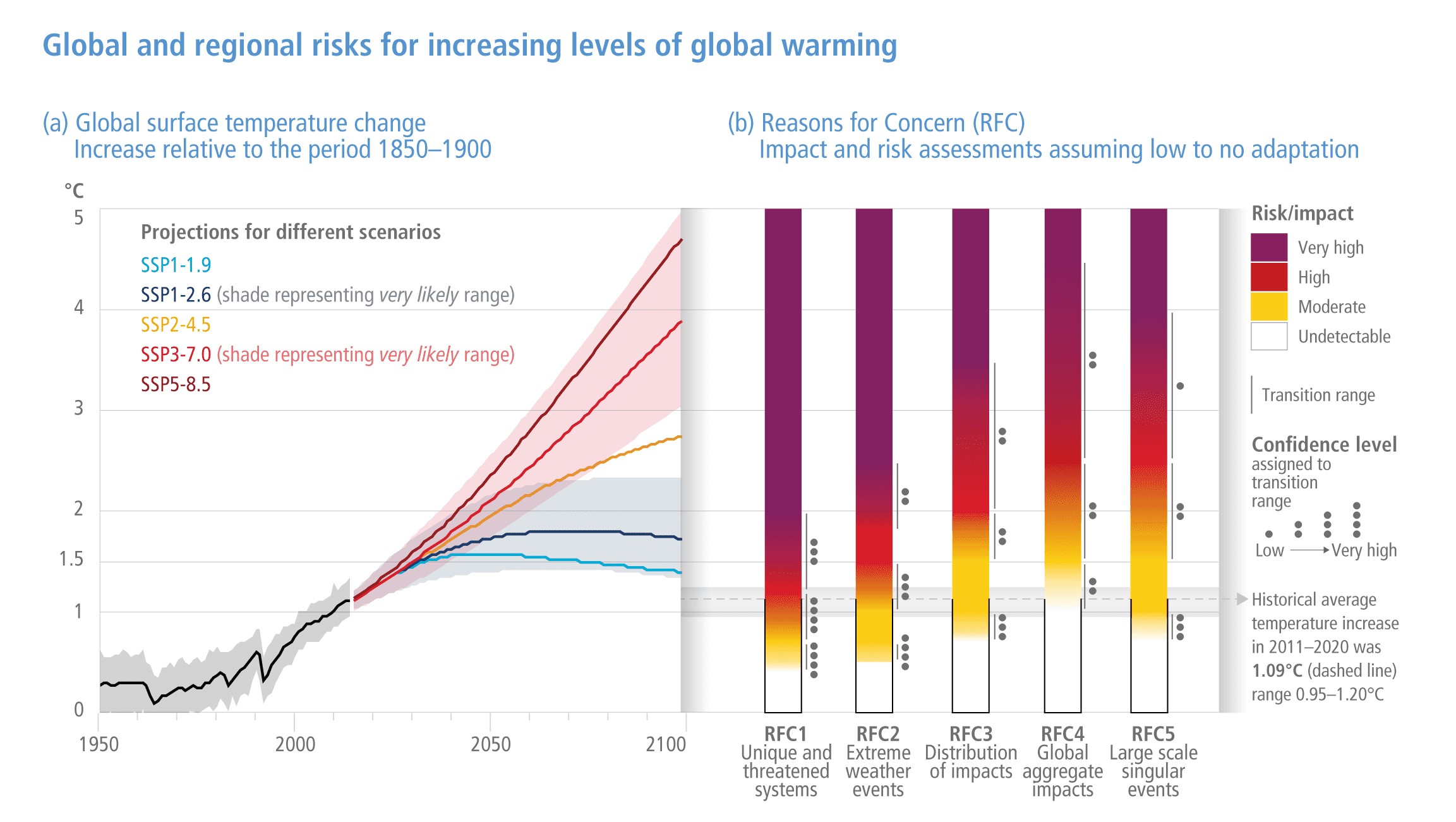What is climate change?
Climate change refers to any change in climate over time, whether due to natural variability or as a result of human activity - IPCC
Our weather
Ireland’s climate and weather is variable over periods of hours to days, it changes quickly and often going from showers to sunshine. However, we can get stable periods of hot or cold spells too and the storms can be strong and damaging. Prolonged droughts or freezes are rare but do happen.
Seasons
The seasons bring changes, the summer is warmer than the winter and with autumn and spring being in-between. But this can vary. There are cold wet summers and dry warm winters.
Longer term
So what does this all mean looking a bit more long term? By doing that, we can work out the average and the range of variability. So, if we average temperature data over a period of thirty years, we can work out how hot or cold our summers and winters might be on average and how these might vary. This is how we used to work out what our average climate was like. Some linked features such as floods and droughts were calculated over longer period such 100 years or serval 100 years. These were referred to as return periods, i.e., this event would on average occur once in a 100-years.
In a stable climate we would expect that these values would, on average, be the same decade after decade. However, we now know that is not the case. Analysis of over 100 years of observational data shows that our climate is changing. This is most evident in the temperature data and particularly over recent decades. Analysis of these data show that the global average temperature has increased by 1.09oC since pre-industrial times (IPCC, 2021).
It is not only temperature that has changed. There have been changes in rainfall and decline in snow and ice. Sea-level has increased as the oceans also heat up. These changes have been assessed by the Intergovernmental Panel on Climate Change (IPCC) in their major assessment reports.
Key Information
In the latest assessment report of the IPCC, changes in climate recorded over the last 100 years are considered unprecedented and as a result of human activities, particularly the burning of fossil fuels which results in increased atmospheric concentrations of Greenhouse Gases (GHGs).
The build-up of GHGs in the atmosphere since the start of the industrial revolution has enhanced the Earth's natural greenhouse effect and resulted in an increase in average temperatures globally. A one-degree global warming is significant as it takes a vast amount of heat to warm all the oceans, atmosphere and land.
The difference between weather and climate is a measure of time. Weather relates to the conditions of the atmosphere over a short period of time while climate refers to average weather patterns experienced over long time periods (minimum of 30 years). When we talk about climate change, we are referring to changes in long-term averages of daily weather.
Greenhouse gases keep the Earth warm through a process called the 'greenhouse effect'.
- In the absence of this effect, the earth would be a much colder place than it is today;
- As a result of human activities (burning of fossil fuels), levels of atmospheric greenhouse gases are now >40% higher than at any time during the last 800,000 years and this has enhanced the natural greenhouse effect and resulted in warming of the planet;
- Over the last 150 years, global mean temperature has risen by 1.09°C and this increase has a wide range of effects on the oceans, weather patterns, snow and ice, and plants and animals;
- Ongoing and projected changes in climate will have both direct (e.g. temperature-related mortality) and indirect effects (e.g. changes in water quality) and can be of both slow (e.g. drought) and sudden (e.g. hurricane) onset.
Detailed explanation
The Earth's climate has always been changing. However, in its sixth assessment report, the IPCC concluded that it is now unequivocal that the global warming of the last 50 years is due to man-made greenhouse gases (GHGs). This Earth's natural greenhouse effect warms the planet. However, due to manmade emissions of GHGs, this natural greenhouse effect has been enhanced and global warming is now taking place at a much faster rate than previously expected. Increased rates of global warming are resulting in changes in climate, these changes will have a wide variety of impacts, affecting all aspects of Ireland's economy, environment and society.
The Intergovernmental Panel on Climate Change (IPCC) is the international body for assessing the science related to climate change. The IPCC was set up in 1988 by the World Meteorological Organization (WMO) and United Nations Environment Programme (UNEP) to provide policymakers with regular assessments of the scientific basis of climate change, its impacts and future risks, and options for adaptation and mitigation.
The Greenhouse Effect
Due to the absorption of heat radiated from the earth and the lower atmosphere by gases such as water vapour, carbon dioxide and methane, the earth has a natural greenhouse effect. These gases reflect heat back toward the earth's surface. In the absence of this natural effect, the climate of the earth would be far colder than it is today.

Incoming radiation from the sun passes through the earth's atmosphere and is reflected off the earth's surface. Some of this radiation passes through the atmosphere to space while some is absorbed by greenhouse gases and re-radiated back toward the earth.
Throughout the Earth's history, natural and human factors have affected global climate. Natural causes of climate change include variations in the earth's orbit and volcanic eruptions. Humans influence global climate in many ways but predominately through the emission of GHGs, e.g. carbon dioxide.
Once emitted to the atmosphere, GHGs absorb thermal radiation and re-radiate it in all directions. Some of this thermal radiation is also reflected back towards the surface of the Earth and the lower atmosphere resulting in an increased average surface temperature of the Earth. This process, by which manmade emissions cause an increase in temperature, is termed the 'Enhanced Greenhouse Effect'.
Global Warming
Global warming is a result of human activities which release GHGs into the atmosphere (e.g. the burning of fossil fuels). Increased atmospheric concentrations of GHGs the natural greenhouse effect, warms the planet and accelerates irreversible changes in climate.
The levels of carbon dioxide (CO2) in the atmosphere in the distant past can be determined from bubbles of air trapped in ice. Data indicate that as a result of human activities, the current concentration of CO2 in the atmosphere is >40% higher than at any time during at least the past 800,000 years.
The last few decades have seen a major increase in the awareness of the effects of GHG emissions and the widespread adoption of sustainable energy policies. However, in the latest report, the IPCC have indicated that despite these efforts, emissions continued to increase from 1970 to 2019. By 2019, GHG emissions reached 59± 6.6 billion tonnes (gigatonnes or GT) of carbon dioxide equivalents – the highest level in human history.

Total annual anthropogenic GHG emissions (GtCO2eq/yr) shown by the different groups of gases 1990-2019. These include CO2 from fossil fuel combustion and industrial processes (CO2-FFI); CO2 from land-use, land-change and forestry (CO2-LULUCF); methane (CH4); nitrous oxide (N2O); and fluorinated gases (F-gases) [source: IPCC, 2021].
In order to ensure that temperature change does not exceed 2°C above pre-industrial levels, it is essential that we keep CO2 concentrations under 450ppm. The latest IPCC report indicates that the current trend in GHG emissions will not achieve this target and that if major changes are not made from the current policies in place, global surface temperature increase will be between 2.2°C and 3.5°C by 2100. As a result, the IPCC indicates that we will need to lower emissions of GHGs by 27-63% (compared to 2019) by 2050, and by nearly 100% by 2100.
Climate Change Impacts
Climate change will have both direct and indirect effects, also referred to as 'primary' and 'secondary' impacts. Direct impacts will include increasing temperatures, more extreme weather conditions, an increased likelihood of river and coastal flooding, water shortages, changes in types and distributions of species and the possible extinction of vulnerable species. Indirectly, climate change can lead to the disruption of ecosystem services, e.g. flooding of agricultural lands, or human processes, e.g. the breakdown of transport infrastructure.
On a global basis, five reasons for concern have been identified. These reasons for concern provide an overview of key climate risks and a starting point for evaluating climate impacts. These illustrate the implications of warming and of adaptation limits for people, economies and ecosystems across sectors and regions.
The five reasons for concern are in relation to:
- Unique and Threatened Ecosystems: Some ecosystems and culture are already at risk from climate change. With an additional warming of 1°C, the number of unique and threatened systems at risk of severe consequences increase. At a warming of 2°C, many systems (e.g. Arctic sea ice and coral reefs) with limited capacity to adapt are subject to very high risk.
- Extreme Weather Events: Climate change related risks from extreme events (e.g. heatwaves, heavy precipitation and coastal flooding) are already considered moderate. With 1°C additional warming, risks are high.
- Distribution of Impacts: Risks are unevenly distributed between groups of people and between regions. Risks are already moderate because of regional differences in observed climate changes, particularly for crop production. Based on projected decreases in regional crop yields and water availability, risks of unevenly distributed impacts are high under warming of 2°C.
- Global Aggregate Impacts: The risk of global aggregate impacts are moderate under additional warming of between 1°C and 2°C, reflecting impacts on the Earth's biodiversity and global economy. At an additional warming of around 3°C, extensive biodiversity loss, with associated loss of ecosystem goods and services can be expected. For the global economy, aggregate damages increase with warming but there are few quantitative estimates available.
- Large-Scale Singular Events: With increasing warming, some physical and ecological systems are at risk of abrupt and/or irreversible changes. Risks associated with such tipping points are moderate between 0°C and 1°C of additional warming. However, there are already signs of some ecosystems (e.g. coral reefs and Arctic ecosystems) already experiencing irreversible regime shifts. Risks increase at a steepening rate under and additional warming of 1°C to 2°C and become high above 3°C due to the potential for large and irreversible sea level rise from ice sheet loss.

Risks associated with these reasons for concern at a global scale are shown for increasing levels of climate change. The colour shading indicates the additional risk due to climate change when a temperature level is reached and then sustained or exceeded. White indicates no associated impacts are detectable and attributable to climate change. Yellow indicates that associated impacts are both detectable and attributable to climate change with at least medium confidence. Red indicates severe and widespread impacts [source: IPCC, 2021].
Resources
- WMO – Climate: On this page, the World Meteorological Organisation (WMO) provides and overview of what climate change is and how climate is expected to change into the future.
- Climate Communication: Led by Director Susan Hassol and Science Director Richard Somerville, Climate Communication employs plain language to make the science of climate change more understandable and aims to improve public understanding of climate change.
- Climate Central: Climate Central surveys and conducts scientific research and informs the public of key findings, with a focus on the USA.
- Environmental Protection Agency - Climate Change: The EPA Home page on climate change provides information to enhance your understanding of climate change, climate action and research.
- Met Éireann - Climate of Ireland: On this page, Ireland's National Meteorological Service provides information on Ireland's climate, projected changes and implications.
- A Report of Working Group II of the Intergovernmental Panel on Climate Change: Summary for Policymakers: Based on contribution of IPCC Working Group II (AR6), this report assesses the impacts of climate change, looking at ecosystems, biodiversity, and human communities at global and regional levels. It also reviews vulnerabilities and the capacities and limits of the natural world and human societies to adapt to climate change.
- A Report of Working Group III of the Intergovernmental Panel on Climate Change: Summary for Policymakers: Based on contribution of IPCC Working Group III (AR6), this report provides an updated global assessment of climate change mitigation progress and pledges, and examines the sources of global emissions. It explains developments in emission reduction and mitigation efforts, assessing the impact of national climate pledges in relation to long-term emissions goals.
